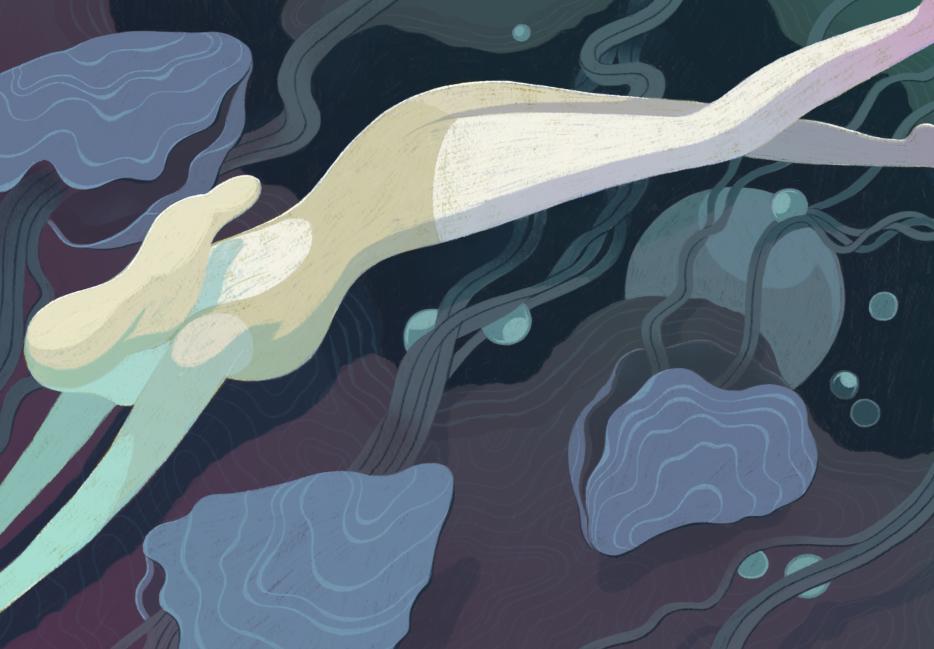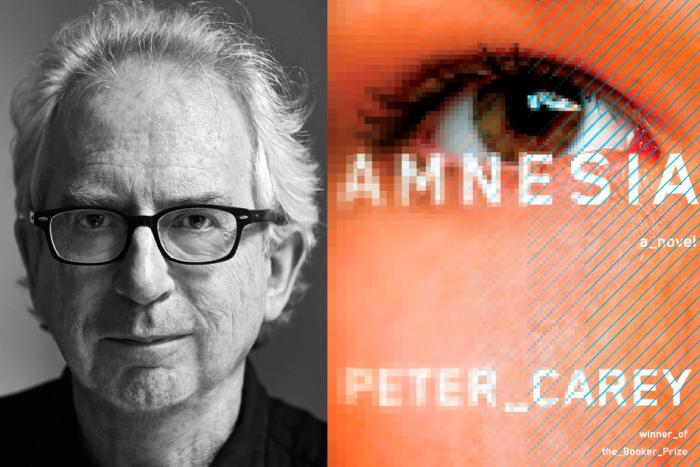The mind wanders on vacation; why else vacation in the first place? Away from work and home life, surrounded by people who live in total ignorance of your typical daily toil, every motion is outward. You consult the map, orient yourself, observe the foreign behavior, take in the new air. And without the usual full slate of drudgery, there’s time to actually think a little about the world around you. Why does the café owner look up and down the block when he unlocks the front door at 6:30 every morning? What is the exact shade of blue on that upturned rowboat by the dock? Why do I have this song stuck in my head?
Eleanor Clark must have found herself compelled to such a widening reverie upon arriving on the northern French coast with her husband and two children in the early 1960s. There she saw the Bretons’ distinct, centuries-old oyster farming practice, and the ways in which that practice shaped the character of the town, the families, and the individual people. Her mind must have arrived at that old saw, “The world is your oyster,” or the global romance for pearls; maybe she thought about the first brave soul to crack open a shell and slurp down the salty, mucus-like protein inside. Soon those flights were deepened by research, enriched by local reportage, and enlivened by Clark’s own empathetic imagination, resulting in a fascinating, world-encompassing masterpiece, The Oysters of Locmariaquer, published a half-century ago last year.
A short book that nevertheless feels encyclopedic, The Oysters of Locmariaquer begins on the beach, where locals cultivate a specific breed of bivalve called the belon, using mainly flat-bottomed boats and handmade “tiles,” beds on which the oysters are strung together and then hung in the tide. It’s an exhausting, exacting process that Clark returns to over the course of the book, but her gaze can’t help but roam. She runs down the representations of oysters in literature and language, considers their ascension from cast-aside sea trash to international delicacy (and their subsequent decline from resplendence to scarcity), explains their mating and bodily development, and even dips into closely-observed realist fiction in order to convey the inner world of people whose lives are defined by their proximity to this one extraordinarily niche industry. The book’s mode is just as mercurial. One minute, it’s a marine biology textbook; the next, a gripping and dire portrait of seaside despair. Often it transforms in mid-stride, as in this wonderful passage that comes after a short description of the anatomical differences between oyster species. These distinctions are hard to appreciate, Clark explains, because they’re “far from finished”—evolution still needs to complete its task, with no regard for human impatience:
It seems the time-sense of the human race, all but the most backward, has been out of kilter for the last century or so. The old feel of it is gone and the new one hasn’t anywhere near caught up with what we know since what we know got expanded too suddenly, like objects in dreams. We are not sick, just insecure, with a bad footing in between human history, which looks either too big or too small depending on one’s mood, and some vague apprehension of astronomy. The oyster will help put us straight. Beneficent Oyster! all minds bless you, all minds can comprehend you, after a fashion.
Oysters won a 1965 National Book Award, and Clark in her day was famous enough for People magazine to profile her life with husband Robert Penn Warren. But I’ve never seen her or this book on any list of canonical nonfiction, never seen it on a syllabus, or even heard any writer friends discuss it. The only author I’ve ever seen claim it as an influence is William Least Heat-Moon, who apparently reread it as he wrote Blue Highways. And on the one hand, tough cookies; the world is lousy with forgotten brilliance. But it’s particularly baffling that Oysters has become invisible, considering how many recent books resemble it.
It seems like a natural precursor to Eula Biss’s On Immunity, for example, or Leslie Jamison’s The Empathy Exams—books that take a chosen theme, pinpointed in the title, then orbit around that one concern for 200-odd pages, encompassing literary criticism, memoir, medical history, whatever can be brought to bear. There’s a similarly prismatic approach in Hilton Als’ White Girls, a multifaceted look at personal identity among artists and art lovers, or Elena Passarello’s Let Me Clear My Throat, an essay collection about the human voice that swerves between researched pieces, first-person narratives, and even oral histories. They all share Clark’s kaleidoscopic method, a “13 Ways of Looking at a Blackbird” philosophy towards their chosen topic. They are all experts of a kind, but the appeal of their work is its eccentric combination of forms and ideas rather than pure mastery of any one approach.
These writers worry that writing is merely a diversion. It can’t overcome the fact that, “Even if we speak the same ‘language,’ we don’t speak the same language. Something forever separates us.” It cannot answer for pain, or bring a lost species back to life.
Clark of course didn’t invent this kind of book; its roots go back at least as far as Robert Burton’s The Anatomy of Melancholy, first ed. 1621, which was a bald attempt to catalogue every cause, cure, and symptom for what we now call “depression.” In Clark’s time, Rebecca West published Black Lamb and Grey Falcon, a billion-word travelogue through Yugloslavia that contains book-length dissertations on gender, religion, colonialism, World War I, and marriage, in 1941. In the decades after The Oysters of Locmariaquer, Bruce Chatwin wrote The Songlines, a fiction/nonfiction hybrid about Australian aborigines, and Ian Frazier wrote the gloriously formless guided history Great Plains. Over the last few decades Geoff Dyer, Maggie Nelson, and Rebecca Solnit have carried this torch as well. But Clark’s forerunners and followers alike often operated under the banner of some existing genre, usually the travel book. Oysters is a travel book as far as it goes—certainly it is a vivid evocation of life in the title town—but Clark has even less use for genre distinctions than these other authors. There is no quest or forward movement in Oysters, no pretensions to exhaust a topic or write some sprawling quasi-reference text. It is not “an essay.” It is a cousin only to itself, or, maybe to William H. Gass’s short essay On Being Blue, published in the mid-1970s but reissued in 2014 as if in solidarity with the recent spate of polymathic creative nonfiction.
There is a small clue within many of these books as to why Clark remains relatively unread. Take Leslie Jamison’s concern in her essay “Devil’s Bait,” concerning Morgellons Disease, a condition that may or not be entirely psychosomatic: “It would be too easy,” Jamison says, to let Morgellons sufferers stand “as walking emblems for how hard it is for all of us to live in our own skin. I feel how conveniently these lives could be sculpted to fit the metaphoric structure—or strictures—of the essay itself.”
Similarly, over the course of essays that are often rife with intimate personal details, either his own or his subjects’, Hilton Als worries that “details … diminish me, or rather, the whole storytelling enterprise does, words limit things.” Read enough of these recent books and you will see a shared nervousness over the purpose or morality of writing itself. There’s a widespread anxiety that writing, at least of personal nonfiction, is inherently exploitative, or, in Eula Biss’s case, that it isn’t powerful enough to bridge the divides between people of unlike minds.
All of these worries are present in Matthew Gavin Frank’s Preparing the Ghost, also published last year. Frank’s book, “An Essay Concerning the Giant Squid and Its First Photographer,” is the most Clark-like of any I’ve listed so far, both in its briny subject matter—as in Oysters, you can nearly feel the salt spray lifting off Ghost’s pages—and in its cartwheeling structure. Frank moves between recollections of his grandfather and quotations from ancient teuthological studies, sometimes within the same paragraph. He also reports from the coast of Newfoundland, where his main subject, a 19th-century preacher named Moses Harvey, carted a newly dead giant squid into his own bathtub to secure the first-ever photo of the creature.
It’s an exceptionally entertaining book, though Frank can’t help drawing bigger conclusions about his own work: “Our obsessions allow us to live, then take us away… We mythologize the actual, just because it’s unusual.” On the next page he admits to “mythologizing” one of the book’s central characters, the owner of a Newfoundland insect museum. Later, in one of the book’s most extraordinary passages, he imagines, in great narrative detail that I assume must be at least partly fictional, Harvey’s efforts to actually move the giant beast from the sand to his home. It’s reminiscent of one of Oysters’ greatest sections, where Clark describes the life of a priest with an intimacy that goes well beyond mere journalistic profiling. But Frank is borderline apologetic about such storytelling:
We also tell stories about the things we have driven to extinction, or the things that so deftly (except in rare cases—things like the giant squid) escape our capture. We mythologize the things we have so completely killed. And we mythologize and commodify the things that, try as we might, we can’t completely kill.
Frank and his contemporaries worry that writing is merely a diversion. It can’t overcome the fact that, “Even if we speak the same ‘language,’ we don’t speak the same language. Something forever separates us.” It cannot answer for pain, or bring a lost species back to life.
Eleanor Clark had no such worries, at least not on the page. For her, writing was seemingly just an opportunity—to learn, to showcase a talent, to think. The Oysters of Locmariaquer is at times a dark book, particularly when she addresses the over-farming of certain breeds and says plainly that they won’t last long. (The last fifty years have proven her right.) But it’s also a light one, insofar as a book this packed with information can be light. Throughout, Clark seems entranced, and her interest in oysters is more aesthetic than moral. The tiles, for instance, are “unbeautiful only to the unseeing; their beauty is all motion though they stand motionless, and is in process now; they are launched, they are out on their own farther than whaling ships, to engage in their white secrecy with all that we least know, and in that long and awesome encounter the work of art is becoming.”
Here is where, writing in 2015, she might pause to interrogate the nature of her own obsession, her role in the oysters’ depletion as a bystander to it, her inability to really convey their complexities. But instead, Clark goes for a smaller moment of peace, and reveals the whole principle behind her great book: “So why not speak of the joy of the creative act in this operation? That is all any of us is doing—trying to put our tiles right, to catch a few oysters.”






